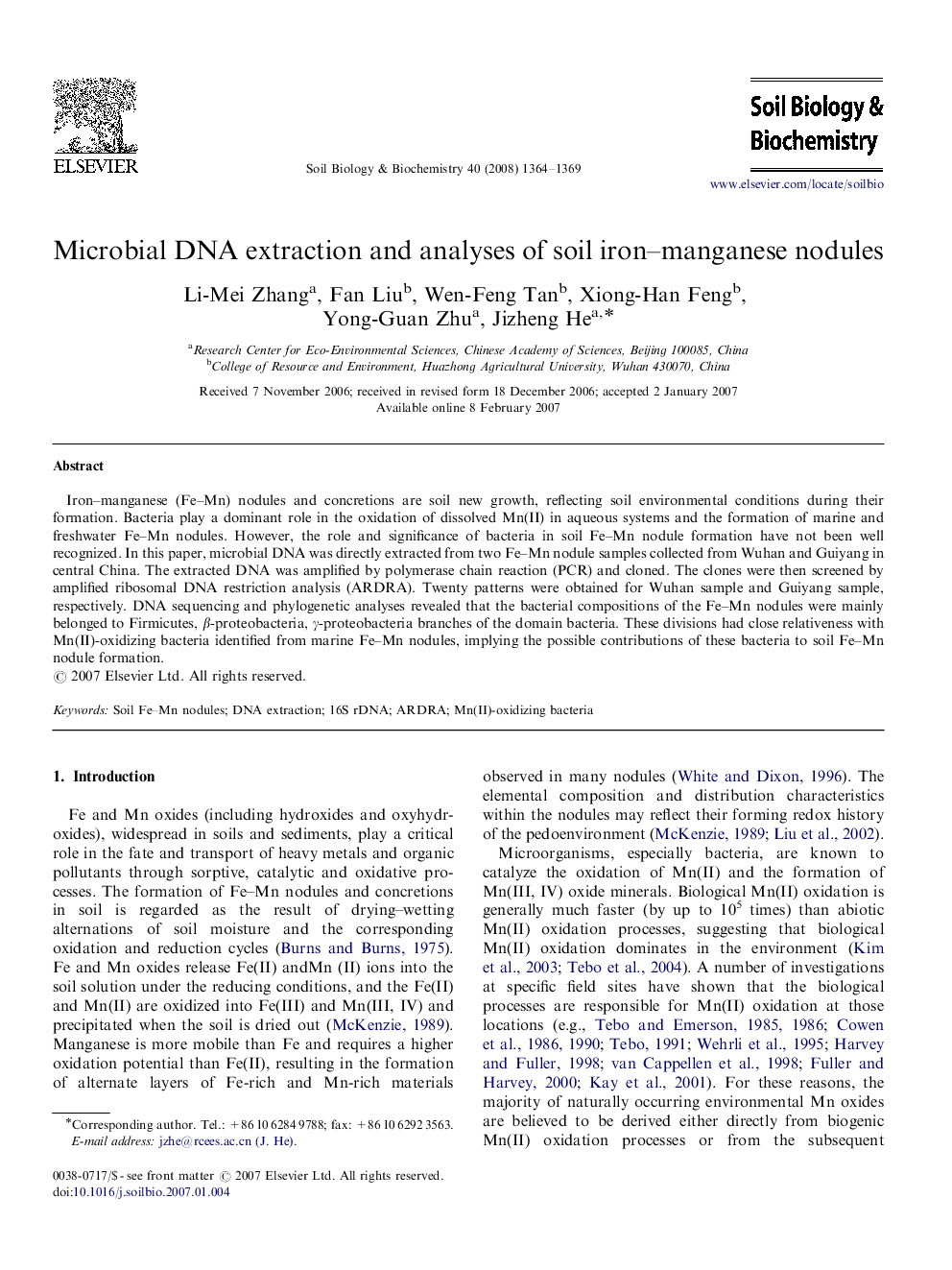| Article ID | Journal | Published Year | Pages | File Type |
|---|---|---|---|---|
| 2026943 | Soil Biology and Biochemistry | 2008 | 6 Pages |
Iron–manganese (Fe–Mn) nodules and concretions are soil new growth, reflecting soil environmental conditions during their formation. Bacteria play a dominant role in the oxidation of dissolved Mn(II) in aqueous systems and the formation of marine and freshwater Fe–Mn nodules. However, the role and significance of bacteria in soil Fe–Mn nodule formation have not been well recognized. In this paper, microbial DNA was directly extracted from two Fe–Mn nodule samples collected from Wuhan and Guiyang in central China. The extracted DNA was amplified by polymerase chain reaction (PCR) and cloned. The clones were then screened by amplified ribosomal DNA restriction analysis (ARDRA). Twenty patterns were obtained for Wuhan sample and Guiyang sample, respectively. DNA sequencing and phylogenetic analyses revealed that the bacterial compositions of the Fe–Mn nodules were mainly belonged to Firmicutes, β-proteobacteria, γ-proteobacteria branches of the domain bacteria. These divisions had close relativeness with Mn(II)-oxidizing bacteria identified from marine Fe–Mn nodules, implying the possible contributions of these bacteria to soil Fe–Mn nodule formation.
